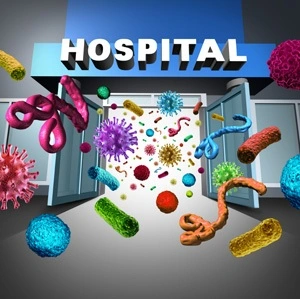
Healthcare associated infections (HAIs) are infections that patients are exposed to in a healthcare facility while receiving medical care. In Africa, HAIs have a prevalence of about 14.8% which is double of the average European prevalence (7.1%) (CDC, 2017).
Healthcare associated infections constitute the most frequent adverse event threatening patient safety (WHO, 2014).
Types of Healthcare Associated Infections
- Catheter-associated urinary tract infections (Nicole, 2014).
- Surgical site infections
- Bloodstream infections (Atilla et al., 2017)
- Pneumonia
- Clostridium difficile infections
Other HAIs include: eye, ear, nose, throat, or mouth infections; systemic infections; lower respiratory tract infections; skin and soft-tissue infections; cardiovascular system infections; and bone and joint tissue infections.
How to prevent healthcare associated infections
- Practice regular hand washing
- Always ask your healthcare workers what they’re doing to keep you safe from infection.
- Ask your doctor what the healthcare team does to prevent infections during and after a surgery.
- Be able to recognize the signs of skin infection and report to the doctor.
- Redness, draining, or pain around the surgical or catheter insertion sites are signs of infection that often come with a fever. Tell your doctor right away if you have any of these symptoms (Cleveland Clinic, 2018).
How else do you think we can prevent HAIs? What type of HAI have you experienced?